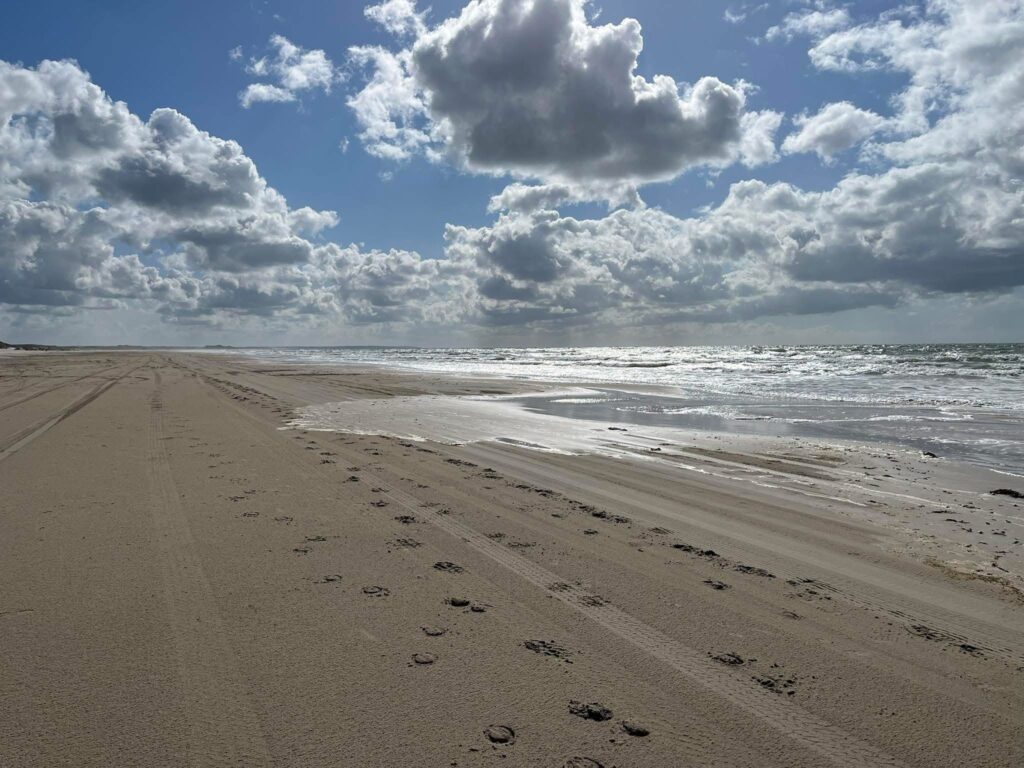This week, walking along the Danish coast, I felt it again: that deep, almost cellular exhale that comes when we stand near the sea. The soft roar of the waves, the slow rhythm of the tide, the expansive blue stretching to the horizon, inviting our nervous systems to finally, gently, let go.
Many of us have felt it. That moment by the sea, the lake, or even a quiet fountain, when our shoulders drop and our breath deepens. But why does water have such a powerful effect on our minds and bodies?
It turns out, there’s science behind the serenity.
The Blue Mind State
Marine biologist Dr. Wallace J. Nichols coined the term Blue Mind to describe the mildly meditative state we enter when we’re near, in, on, or under water. He writes in his book Blue Mind: The Surprising Science That Shows How Being Near, In, On, or Under Water Can Make You Happier, Healthier, More Connected, and Better at What You Do:
“Water quiets all the noise, all the distractions, and connects you to your own thoughts.”
Nichols contrasts this with what he calls Red Mind; the anxious, over-stimulated, constantly “on” state that many of us live in daily. Blue Mind, by contrast, offers restoration. It helps us return to presence, to clarity, to calm.
How Water Calms the Nervous System
Beyond the poetic, there’s biological truth. Being near water can activate the parasympathetic nervous system, which is responsible for our rest, digestion, and recovery.
According to a 2024 Axios report, even two minutes of exposure to water – looking at it, listening to it – can lower blood pressure and heart rate. This signals the body to shift from fight-or-flight (sympathetic) into rest-and-digest (parasympathetic) mode.
Further research has shown that watching water can reduce stress hormones like cortisol and epinephrine. A Saatva Health article points to the therapeutic effects of aquatic environments, including aquariums, in decreasing anxiety and enhancing mood.
In a world where we’re increasingly disconnected from nature, and from our own embodied experience, water offers welcomed relief.
What This Means for Leaders and Professionals
As a coach and facilitator working with leaders and professionals navigating complexity, I often talk about the importance of pausing, of creating space, of shifting gears. Blue Mind offers not just a metaphor, but a practice.
Where in your life can you find water, whether real or symbolic? Perhaps it’s time near a river, a walk along the coast, or even the simple act of running water while you reflect. These are not indulgences; they are tools for recalibration.
We don’t have to wait for holidays to engage the parasympathetic system. We can build micro-moments of Blue Mind into daily life.
An Invitation
This week, the Danish coast reminded me what’s possible when we step away from the noise and toward the stillness of water. Not to escape, but to return. To soften. To listen. As I return to work and life close to the Mosel river in Luxembourg, I will continue to visit it on my daily walks with renewed intentionality.
Where might you find your own version of Blue Mind?
References:
- Nichols, W. J. (2014). Blue Mind. Little, Brown and Company.
- Axios (2024). Blue mind: The science of water and calm
- Saatva (2024). What is Blue Mind Theory?



